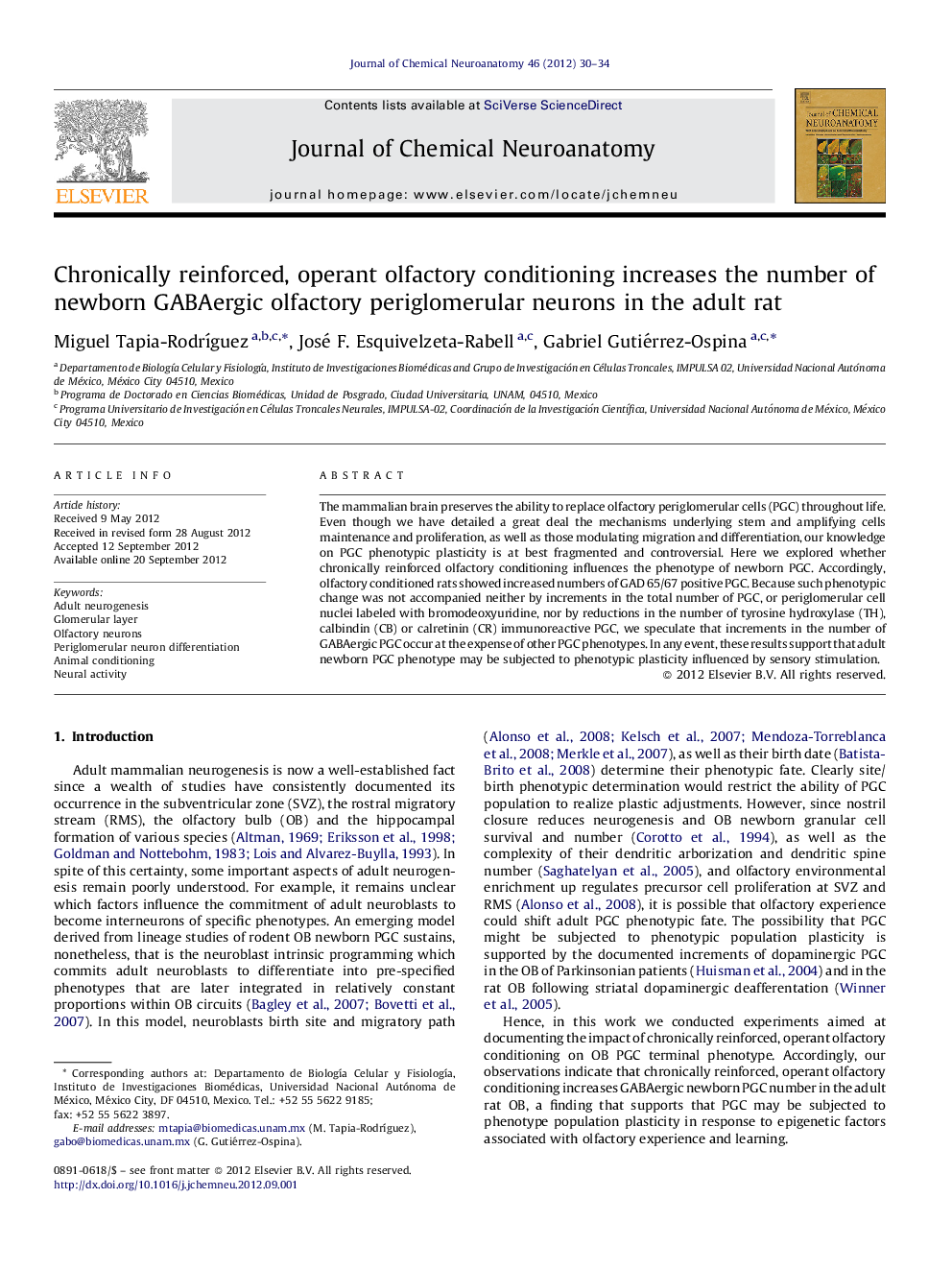| Article ID | Journal | Published Year | Pages | File Type |
|---|---|---|---|---|
| 1988994 | Journal of Chemical Neuroanatomy | 2012 | 5 Pages |
The mammalian brain preserves the ability to replace olfactory periglomerular cells (PGC) throughout life. Even though we have detailed a great deal the mechanisms underlying stem and amplifying cells maintenance and proliferation, as well as those modulating migration and differentiation, our knowledge on PGC phenotypic plasticity is at best fragmented and controversial. Here we explored whether chronically reinforced olfactory conditioning influences the phenotype of newborn PGC. Accordingly, olfactory conditioned rats showed increased numbers of GAD 65/67 positive PGC. Because such phenotypic change was not accompanied neither by increments in the total number of PGC, or periglomerular cell nuclei labeled with bromodeoxyuridine, nor by reductions in the number of tyrosine hydroxylase (TH), calbindin (CB) or calretinin (CR) immunoreactive PGC, we speculate that increments in the number of GABAergic PGC occur at the expense of other PGC phenotypes. In any event, these results support that adult newborn PGC phenotype may be subjected to phenotypic plasticity influenced by sensory stimulation.
► We made a new olfactory operant conditioning to test sensory influence in behavior. ► Some subtypes of GABAergic interneurons were upraised in conditioned rats. ► We propose that sensory stimulation could promote phenotypic plasticity.
